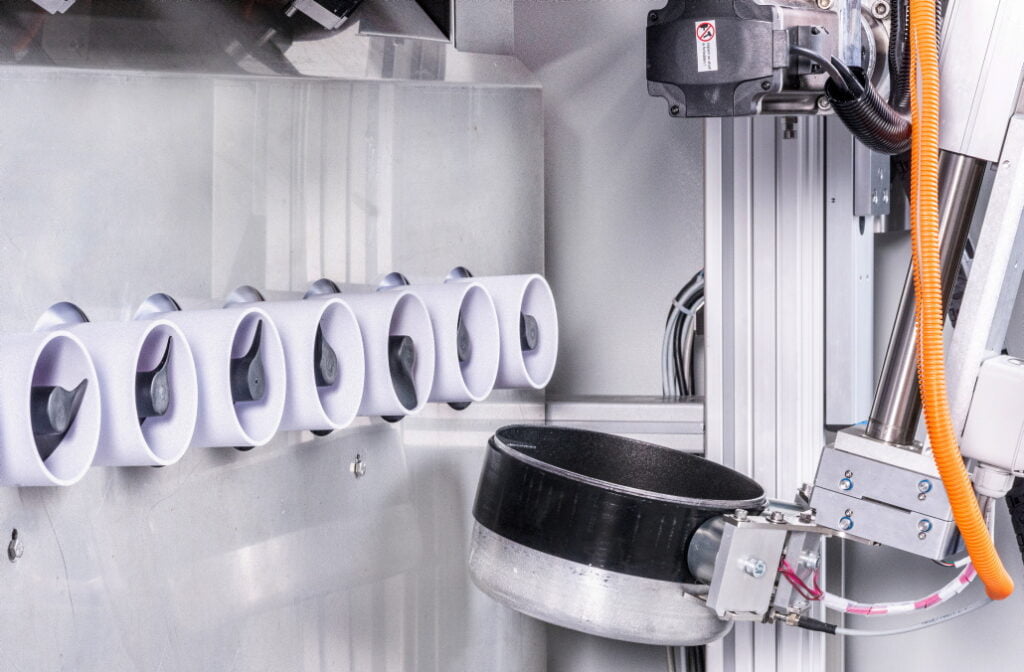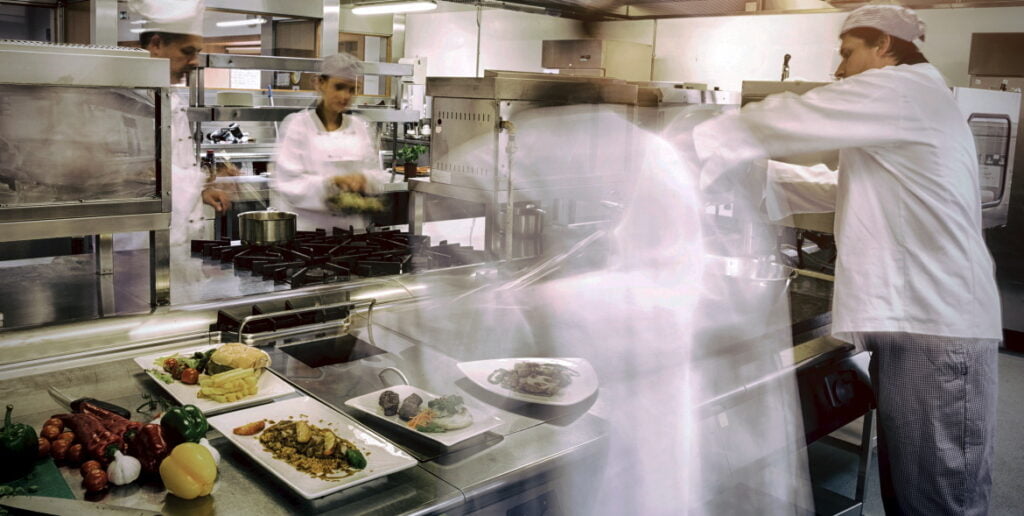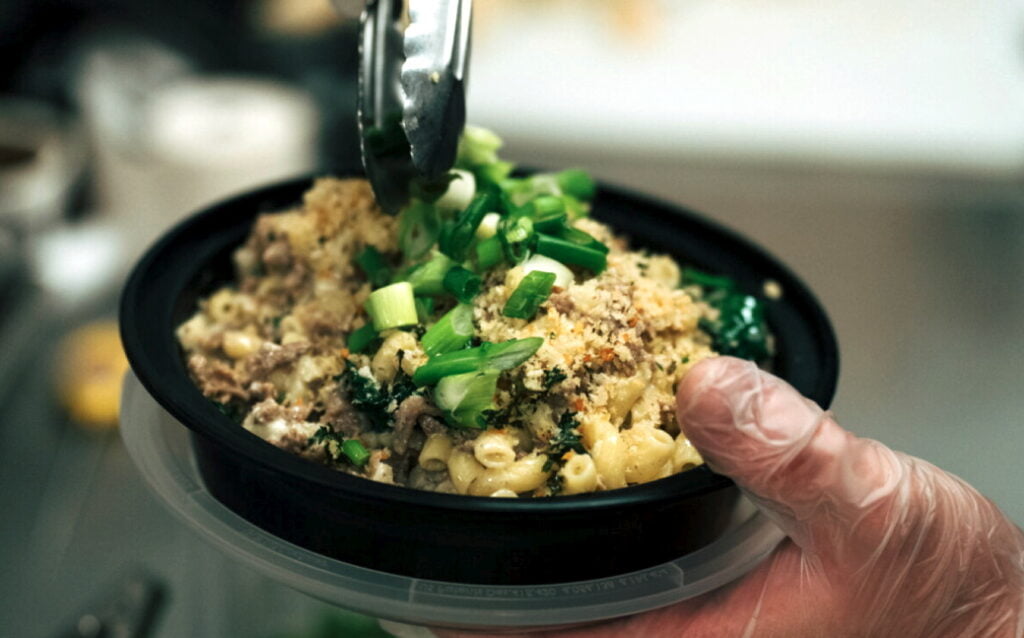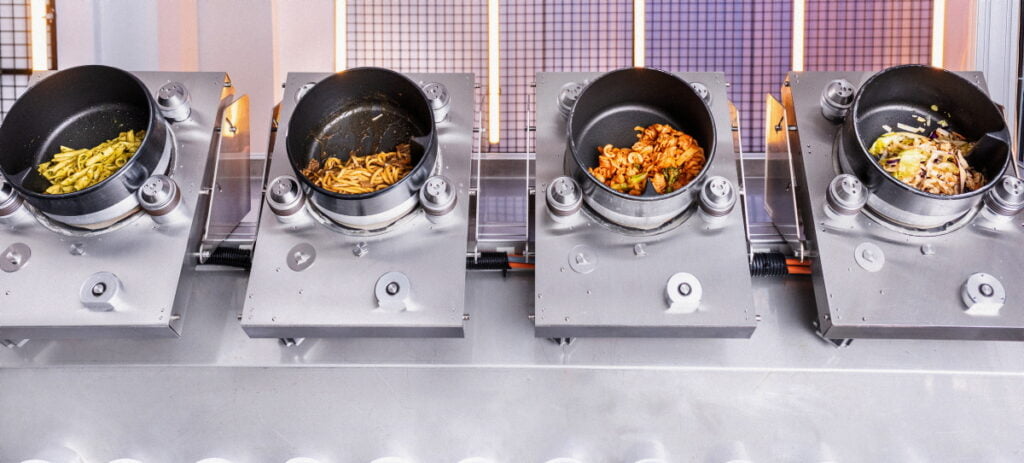Meet the kitchen robot that can prepare a chicken Caesar salad, spaghetti Bolognese, teriyaki steak, chicken penne alfredo, all at the same time.
And then it does the washing up.
The Beastro is an all-Israeli invention that provides the chef in any commercial kitchen with an extra four pairs of hands.

It follows their instructions to the letter, weighing out ingredients from an array of feeders, cooking and stirring the pot for the exact times specified, and preparing up to 75 dishes an hour.
“Anything you do in a pan, a wok or pot, you can with the Beastro,” says Yair Gordin, CEO of Kitchen Robotics, the startup behind the machine.
“Our customers use it to make omelet for breakfast, Thai kitchen, Indian kitchen, Italian kitchen, Cuban kitchen. It takes less than five minutes for the chef to define the recipe. It’s very simple.
“You tell it to put 5ml of oil into the pot, then 25g of chopped onion, then to heat it a specific temperature for one-and-a-half minutes, then add exact quantities of pre-cooked pasta and cream and mushrooms, and then cook it for another minute and a half.”

The Beastro has a robotic arm that picks up the pot to collect ingredients, as needed, from any of the 12 liquid feeders – water, oils, cream, sauces, for example – and the 23 non-liquid feeders – chopped tomatoes, vegetables, chicken, meat, pre-cooked rice or pasta.
The pots are “stirred,” or rotated over the heat, then cleaned and sterilized after each use in the built-in dishwasher.
It can replace two out of three kitchen staff, says Gordin, in an industry that battles a constant recruitment crisis, driven by low pay, monotonous work and unsociable hours.
Beastro still needs human intervention and more complex tasks are, for the time being, beyond its reach, says Gordin.
Raw ingredients need to be ready washed and chopped. It also can’t handle some larger items , such as a halved avocado or a whole egg.
And once a dish is cooked, it needs somebody to present it on a plate, add a garnish and actually serve it.
But it’s a huge help for many routine and time-critical tasks, and chefs who were initially skeptical about a robot in the kitchen now swear by it.

“It’s not 100 per cent automation. It’s 80 per cent,” says Gordin. “Michelin-starred restaurants will not use our robots and [Israeli street food eatery] Falafel Shlomo will not use our robot.”
But he says that for the vast majority of restaurants in between, leasing one of their robots will ease a huge burden.
A couple of Beastros are currently up and running, one at a bank in Tampa, Florida, cooking meals for its 750 employees, another at an educational establishment in Miami, Florida.
Sign up for our free weekly newsletter
SubscribeIt’s much easier to get regulatory approval in the US than it is in Israel, says Gordin.
“By the end of this year, we’ll have 10 units working,” he says. “In 2024 we’re planning to deploy another 100 units.”
He says little has fundamentally changed in kitchens over the last 400 years, except for the switch from coal to gas or electricity.
Kitchen Robotics is one of 75 companies globally that is turning the old-fashioned “analog kitchen” into a digital one.
“Most of them trying to create a robot for specific dish, like pizza or pasta,” he says. “But there are only two companies in the world have robot in real customers’ kitchens.”
The other is Miso Robotics, the US company behind a robot that deep fries, but doesn’t cook. Gordin says his company brought its robot to market in a fraction of the time, at a fraction of the cost.
He’s proud of the investors he’s attracted, including Ziv Amiram, co-founder of Mobileye, Israel’s most successful startup, and Compass Group, the world’s biggest catering firm, with over 500,000 employees.
He says the Beastro reduces food waste by 33 percent, and its cooking is absolutely consistent.

“A chef can invent a beautiful and tasty pasta dish but every week he has a new sous chef, and instead of cooking it for five minutes he does it for one-and-a-half,” he says. “The customer isn’t happy and the sous chef needs to do it again.
“Or the customer orders pasta without onion and gets it with onion. This impacts dramatically the restaurant’s profit, and the amount of food it wastes.”
He says the Beastro also provides the restaurant with precise data on use of ingredients and can help plan what it buys, based on past knowledge and future predictions of weather, sporting events, holidays and other factors that drive demand.
It frees chefs from many mundane tasks in the kitchen, so they can devote themselves more to creating new recipes, and readily share them with chefs across the world.

Gordin, a software engineer by training, recalls the inspiration for Beastro – watching a waitress struggle with a simple coffee order.
And how his first thought – designing a robot that would create a perfect cup – evolved into a robot that can now cook the perfect dish.
The challenge now, over and above the Beastro rollout, is to design the next-generation robot which can do more, such as deep frying for McDonald’s or KFC.
Related posts

Editors’ & Readers’ Choice: 10 Favorite NoCamels Articles

Forward Facing: What Does The Future Hold For Israeli High-Tech?

Impact Innovation: Israeli Startups That Could Shape Our Future




Facebook comments